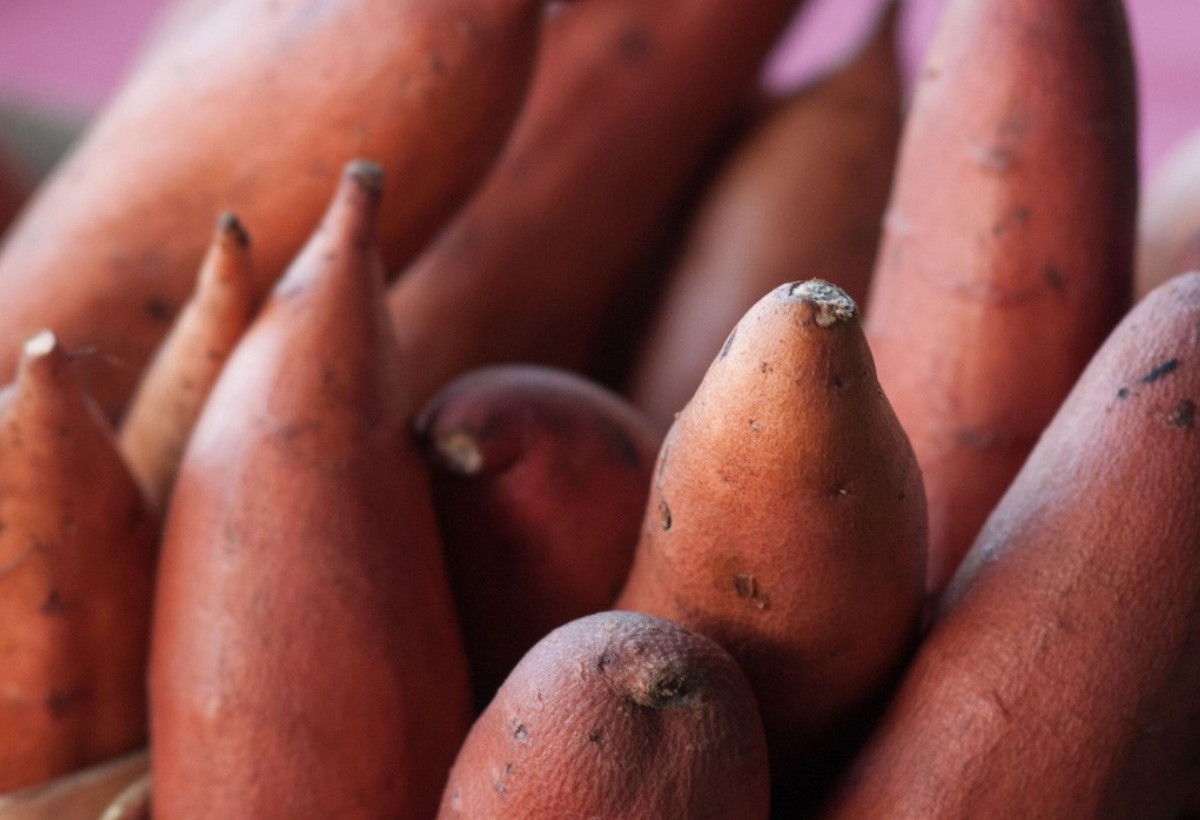
Sweet potatoes are a delicious, nutrient-dense crop with a story that spans continents, cultures, and centuries. Their journey to Texas is nothing short of remarkable—a voyage of thousands of miles, carried by Indigenous innovation and global exploration. From their beginnings in Central and South America to their arrival in the heart of the Lone Star State, sweet potatoes have conquered climates, captivated taste buds, and transformed kitchens across the world.
How Far Do Sweet Potatoes Spread?
The spread of sweet potatoes is a testament to their climate adaptability and popularity. Indigenous Peoples in the New World cultivated them for millennia, understanding their ability to thrive in tropical and subtropical environments. As global agriculture expanded, sweet potatoes followed trade routes across oceans and empires, adapting beautifully to new regions.
From the Caribbean to Africa, Southeast Asia, and eventually Europe, sweet potatoes spread through human migration, trade, and colonization. Spanish and Portuguese explorers played key roles in distributing this tuber crop throughout the Old World. Their global journey showcases the crop’s resilience and universal appeal.
How Far Is Switzerland From Texas?
Using Switzerland as a geographical reference point underscores the global journey of the sweet potato. The distance from Zurich, Switzerland to Dallas, Texas is roughly 5,400 miles by air. While sweet potatoes didn’t travel this exact route, it symbolizes the massive geographical range they’ve covered—from the Andes Mountains to global plates.
Switzerland also represents Europe, where sweet potatoes arrived in the late 15th century. Thanks to explorers like Christopher Columbus, who introduced sweet potatoes to Spain, the root vegetable spread quickly across European kitchens, despite being from the morning glory family—different from their distant cousin, the white potato of the nightshade family.
Can You Grow Sweet Potatoes in Texas?
Absolutely. Sweet potatoes thrive in Texas due to its long growing season and warm temperatures. Texas is now a major sweet potato-producing state. The heat-tolerant nature of the crop makes it ideal for southern U.S. climates, especially in backyard gardening and small-scale farming.
Texans grow sweet potatoes in gardens and on farms alike. With fertile soils and abundant sunshine, areas like East Texas and Central Texas have become popular hubs for sweet potato cultivation. The state’s climate supports sweet potato slips—young sprouts used for propagation—making the growing process both practical and rewarding.
How Far Did Sweet Potatoes Travel to California?
Sweet potatoes journeyed westward as U.S. agricultural interests expanded. California’s Central Valley, with its rich soil and mild climate, is ideal for sweet potato farming. From early Indigenous farming to modern commercial agriculture, sweet potatoes in California reflect both innovation and tradition.
Today, California stands among the top U.S. states in sweet potato production. This westward movement helped diversify American agriculture, and sweet potatoes remain a staple crop, particularly in regions where climate and soil are optimal for high yields.
How Long Do Sweet Potatoes Take to Mature?
The sweet potato growing timeline is approximately 90 to 120 days. From planting slips to harvest, the crop enjoys hot, sunny days. This makes planning the growing season crucial for farmers and gardeners alike.
Harvesting time typically falls in late summer to early fall, depending on the region. In Texas, late October is a common sweet potato harvest time. Proper planning ensures a bountiful yield and aligns with seasonal planting cycles.
How Far Did Potatoes Travel to California?
While not the focus of this article, white potatoes—a cousin from the nightshade family—originated in the Andes Mountains. They traveled a different route to reach California, via Europe and the American East Coast. Today, Idaho is synonymous with white potatoes, though California also grows both types.
Unlike sweet potatoes, white potatoes favor cooler climates. However, their journey reveals another layer of tuber history, contrasting sweet potato cultivation, propagation, and transport methods.
Who Took the Sweet Potato to Spain?
Christopher Columbus is credited with introducing sweet potatoes to Spain after his New World voyages. Spain served as the entry point to Europe, sparking the root’s introduction to Mediterranean diets.
From Spain, sweet potatoes spread rapidly across Europe, particularly in southern regions where the climate supported their growth. Their popularity in European colonization crops helped fuel their global journey.
How Are Sweet Potatoes Transported?
Today, sweet potato transportation involves sophisticated logistics. After harvest, they are cured for shelf life and loaded onto climate-controlled trucks and containers. Supermarkets and grocery stores nationwide rely on these systems for fresh deliveries.
From the farm to your table, sweet potatoes often travel hundreds of miles. Whether originating in California, Texas, or North Carolina, they’re shipped across the country through produce distribution networks that prioritize freshness and quality.
How Did Sweet Potatoes Get to America?
Although native to Central and South America, sweet potatoes were widely cultivated across the Caribbean and the southeastern U.S. long before European arrival. Indigenous Peoples spread the crop naturally across favorable climates.
Sweet potatoes in America are thus both native and cultivated. Their history blends wild growth and agricultural practice. They were already part of Indigenous diets when Spanish and Portuguese explorers introduced them to the Old World.
How Did Sweet Potatoes Change the World?
Sweet potatoes contributed to global food security. In Africa and Asia, they became essential staples due to their nutrient density and ability to grow in poor soils. Their introduction helped reduce famine and support rural economies.
They’ve also gained attention for their role in an anti-inflammatory diet, due to high beta-carotene and fiber content. As a nutrient-dense crop, sweet potatoes continue to shape global diets and sustainable farming initiatives.
Who Brought Sweet Potatoes to America?
Indigenous Peoples were the first to cultivate sweet potatoes in what is now the U.S. Later, Spanish explorers reintroduced cultivated varieties through European trade routes.
Thus, America didn’t import sweet potatoes—it embraced and expanded their cultivation. Modern agriculture has refined the process with propagation techniques, including slips vs seeds, to ensure consistency and high yields.
Where Is the Sweet Potato Capital of the World?
North Carolina holds the title of sweet potato capital of the world. The state leads in U.S. production and innovation. Its research institutions and commercial farms set global standards.
North Carolina’s success lies in its balance of tradition and modern farming techniques. Their sweet potatoes are known for consistency, taste, and high export value.
The Sweet Potato Saga: A Personal Growing Journey
Hilary Madsen, author of Article 2, shares a compelling account of growing sweet potatoes at home. Her backyard gardening adventure reflects the magic of watching slips sprout, vines flourish, and tubers swell underground.
Her story highlights the emotional connection many have with this crop. Growing sweet potatoes isn’t just farming—it’s personal. It’s about patience, joy, and nature’s rhythm.
What Are Sweet Potato Slips and How Do They Work?
Sweet potato slips are the sprouts from mature tubers. Unlike seeds, slips are vegetative cuttings that grow into full plants. This propagation method is essential for consistent quality.
Slips are planted after sprouting indoors or in greenhouses. They root easily in warm soil, thriving in gardens and farms alike. Learning how to sprout sweet potatoes is a first step toward successful harvests.
White Potatoes vs Sweet Potatoes: Key Differences
Sweet potatoes belong to the morning glory family, while white potatoes belong to the nightshade family. This botanical difference influences taste, texture, and growing requirements.
Nutritionally, sweet potatoes are higher in fiber and beta-carotene. White potatoes are starchier. Their culinary uses also vary, with sweet potatoes favoring baking and roasting.
Sweet Potatoes and Their Plant Families
As members of the morning glory family, sweet potatoes are botanically distinct from many other root vegetables. Their heart-shaped leaves and vine-like growth differentiate them in gardens.
This distinction matters for companion planting and crop rotation. Understanding sweet potato cultivation helps gardeners plan better plant spacing in gardens for maximum yield.
Planning the Growing Season for Sweet Potatoes
Success starts with timing. In Texas, slips should be planted after the last frost, usually late March to early April. A long growing season—up to 120 days—means early planting is key.
Soil preparation is crucial. Well-drained, sandy soil supports tuber development. Seasonal planting ensures harvest before the first fall frost.
Sprouting Slips at Home: The Process
To sprout slips, place a sweet potato half in water, toothpicks suspending it. Within days, shoots emerge. These are your future plants.
Once slips reach 6 inches, they’re gently removed and rooted in soil. This method empowers anyone to join the sweet potato growing journey—from backyard gardeners to homestead enthusiasts.
Why This Year Is Different: A Gardener’s Story
Climate change, seed shortages, and a renewed focus on local food have transformed gardening. Many Texans are turning to crops like sweet potatoes for security and satisfaction.
This year’s garden isn’t just about food—it’s about resilience. Sweet potatoes, with their adaptability and storied past, are a beacon of hope and abundance.
FAQs
Q: Can I grow sweet potatoes in a container?
A: Yes! Use large, deep containers with well-drained soil. Provide warmth and full sunlight.
Q: Are sweet potatoes healthy?
A: Extremely. They’re packed with fiber, vitamins A and C, and antioxidants.
Q: How are sweet potatoes different from yams?
A: They’re botanically distinct. True yams are native to Africa and Asia and belong to the Dioscorea genus.
Q: What is the best time to harvest sweet potatoes?
A: Harvest before the first frost, usually 100–120 days after planting.
Q: What climates are best for growing sweet potatoes?
A: Hot, humid climates with long growing seasons, like those in Texas and Southeast Asia.
More Read Also:- DigitalHub4Geeks.com






